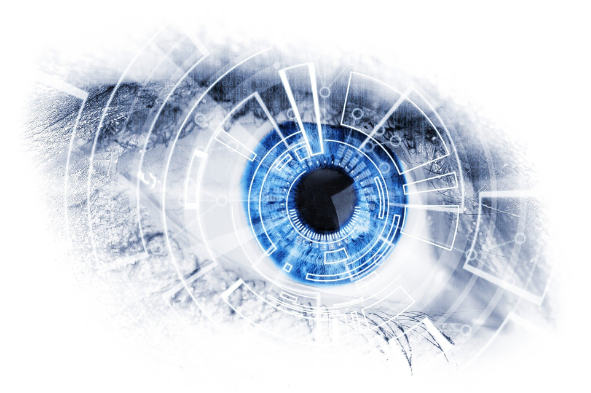 Maths, Physics & Chemistry
Maths, Physics & Chemistry
Machine adapting to its environment
We developed a nanoscale device that can mimic human brain cells for vision, by combining two promising nanomaterials, graphene and perovskite quantum dots. This is a baby step towards developing brain-like computers, which can simultaneously process and memorize information. In the future, this invention will enable us to develop machines that can better adapt to their environment.

What if a robot could adapt itself to a given circumstance more like a human? It sounds like a science fiction movie, but it may become a reality, using neuromorphic (or brain-like) computing. When we look at an object like a flower, or a person, our retina of the eye can simultaneously detect, process and temporarily store the image in our retinal neurons before sending it to the visual cortex of the brain. Present computer-aided image processing techniques cannot perform all these actions simultaneously. Currently, the image is first stored and then processed in two separate units. This bifurcated operation wastes both time and energy.
Developing a system that processes and stores information like the human brain has been a longstanding dream for scientists in the field of robotics and neuromorphic computing. In the late 1980s, Carver Mead developed the concept of neuromorphic computing to create an electronic circuit that mimics the neural structures of the human brain. Neuromorphic computing works on the principle of multiple simple processors ('neurons') and memory structures ('synapses') that use electrical impulses to communicate with each other. Neuromorphic computing can simultaneously process and store information, unlike the current computing techniques, where data processing and storing are performed separately.
We have recently developed a nanoscale device that can simultaneously process and memorize information. The two most commonly used materials for current optoelectronic devices are graphene, a two-dimensional sheet of carbon atoms, and highly light-sensitive nanoparticles called perovskite quantum dots (PQDs). Graphene exhibits high flexibility and stability, as well as high electrical conductivity, but has the disadvantage of low light absorption. By contrast, PQDs have high light absorption properties, but their inferior electronic conductivity is a bottleneck for its optoelectronic device applications.
For developing this device, we synthesized a new material superstructure that combines the strengths of two materials, overcoming their respective limitations. This unique structure is obtained by growing PQDs directly from the lattice of graphene. The interaction between PQDs and the graphene facilitated easy light absorption and electronic transport in the same structure and allowed us to create ultra-thin phototransistors. When these are illuminated, PQDs absorb the light and convert it to electrical charges and directly transfer it to graphene, all in a single step. The nanodevice we developed is able to memorize information based on the incident light, which enables us to demonstrate retina-like nanodevice- an optoelectronic synapse. This is similar to the vision-related brain cells of humans.
To demonstrate the device's ability for neuromorphic computing applications, we have used it in facial recognition experiments with the assistance of machine learning. We first trained our neural network using portraits of four persons, then tested its ability to recognize these apart from other portraits. Our device was able to successfully recognize the portraits of these four people. While this is an exciting step forward, it is a very early stage; we are working to improve the device's performance.
In the future, these devices can be used in various applications, including drones that adapt themselves to a given circumstance, surgical assistance, or aiding soldiers' vision on the battlefield. Maybe, a space vehicle flying to the moon or another planet can adapt to an unanticipated circumstance even if it loses contact with the control station for a brief period.
Original Article:
Pradhan, B. et al. Ultrasensitive and ultrathin phototransistors and photonic synapses using perovskite quantum dots grown from graphene lattice. Sci. Adv. 6, 1-12 (2020).
Next read: How can botulinum toxin help with depression? by Tigran Makunts , Ruben Abagyan
Edited by:
Dr. Ayala Sela , Associate Editor
We thought you might like
More from Maths, Physics & Chemistry
Testing gravity through the distortion of time
Sep 20, 2024 in Maths, Physics & Chemistry | 3 min read by Sveva CastelloStacking molecular chips in multiple dimensions
Aug 30, 2024 in Maths, Physics & Chemistry | 3 min read by Lucía Gallego , Romain Jamagne , Michel RickhausReversible Anticoagulants: Inspired by Nature, Designed for Safety
Jun 12, 2024 in Maths, Physics & Chemistry | 4 min read by Millicent Dockerill , Nicolas WinssingerDistance-preserving moves always keep a point fixed
May 18, 2024 in Maths, Physics & Chemistry | 4 min read by Shaula FiorelliA resonance triggers chemical reactions between the coldest molecules
Apr 5, 2024 in Maths, Physics & Chemistry | 3 min read by Juliana Park , Wonyl ChoiEditor's picks
Trending now
Popular topics


